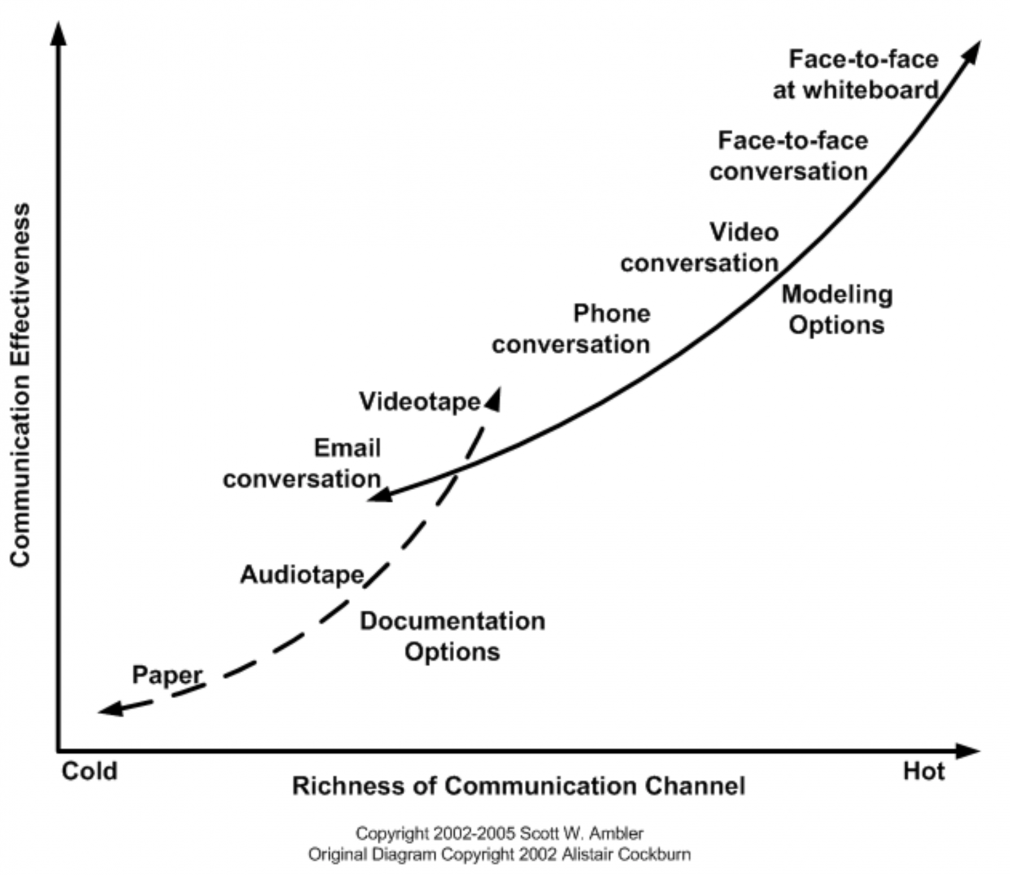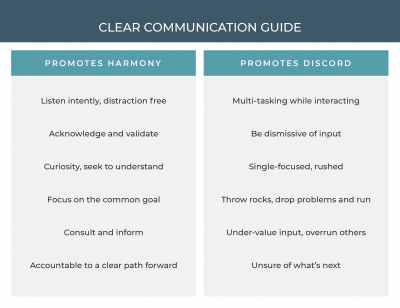Clear communication of our thoughts and ideas has a staggering level of complexity. It is part science, part art, and very messy. This short guide may help you deal with the complexity.
"The great enemy of communication is the illusion of it." The words of journalist and sociologist Walter Whyte ring as true today as they did when he first published them in Fortune Magazine in 1950. Perhaps even more so.
After decades of scholarship, all too often we’re still left scratching our heads about how we ended up with a "failure to communicate," to quote the most famous line from the classic 1967 movie Cool Hand Luke.
“Failure to communicate” is unmistakably witnessed in the 2017 "State of the American Workplace" report, where the Gallup organization found that just one in four employees "strongly agreed" that their manager provides meaningful feedback.
Clear communication of our thoughts, ideas, and feelings appears to have a staggering level of complexity. It is part science, part art, and very messy.
It doesn't have to be this way. Following some simple principles can produce clear communication in presentations, meetings, emails, and beyond.
You won't get very far pounding nails with a screwdriver. By the same token, clear communication depends largely on choosing the right tool for the job.
In our technology-driven society, methods of communication have exploded. From email to text, to instant messaging, from Prezi to PowerPoint, from Zoom to WebEx, the options are endless.
But since communication includes multiple variables such as tone of voice, facial expression, and body language, information intended to contribute to the recipient’s understanding can be easily misinterpreted or left out altogether.
Alistair Cockburn, author and a founder of the agile software development movement, believes that communication's effectiveness is a function of distance. The closer two people are – say, standing at a whiteboard – the more information they can communicate in their interactions. In contrast, an email exchange or text, with no ability to convey nuance or tone or expression, is a low-bandwidth communication.

In contrast, an email exchange or text, with no ability to convey nuance or tone or expression, is a low-bandwidth communication.
Choose the tool that best fits the importance of the moment and the complexity of the message.
Purpose brings clarity. No matter the message or communication channel you choose, start at the end and work backward. What are you trying to accomplish with your message, and what's the best way to get there?
You must answer the why for your audience before you stand before them. It guides you in developing messages and how you want to deliver them. If it's a speech, presentation, or written report, use an outline. Think in terms of a beginning, middle, and an end, just as you would in writing a story.
If it's a meeting, harness the power of an agenda. It highlights for attendees what to expect, how to prepare, and how they can contribute.
Developing the outline and agenda helps you prepare the communication, and not settle for a first draft. Revise, and then revise again. Share the draft with a trusted colleague for comments.
The mindset is the same, even in our text- and email-centric world. Those forms of communication come with a temptation to respond right away, in the moment, with the first thoughts that come into your head. Getting something off your agenda feels so good! But be disciplined. Take time to contemplate and organize your email response. It sends a message to the recipient that you've taken the time to think things through thoroughly.
Clear communication brings the inherent challenge of navigating and resolving different, shifting variables for every encounter. Those who master the variables in both written and spoken form have a leg up on the rest of us, however, not every communication requires you to go “all in. Organization, preparation, and simplification are the constants that promote successful, consistently clear communication. And consistently clear communication produces more engaged employees, which leads to greater success.
Apple co-founder Steve Jobs once said: "It doesn't make sense to hire smart people and tell them what to do; we hire smart people so they can tell us what to do." Clear communication helps bring this truth to life.
We don't communicate just to hear ourselves talk. We communicate to engage an audience and encourage them to act on our behalf and the organization's behalf. Humans are social beings and are better together.
Making your communications engaging to stimulate your target audience is a skill unto itself. More than anything, it requires confidence that comes from being prepared. People want to believe you know your facts and understand your concrete objective. If it's a meeting or presentation, leave time for questions. If it's an email, provide choices.
The key question on every communication is "what's next." As the communicator, it is your job to address this question. Summarize action items, and then follow up to close the loop and ensure accountability of deadlines.
Perhaps the most crucial tip in clear communication: Know when to stop. And listen. As Walter Whyte put it this way in his 1950 article:
"We have talked enough, but we have not listened. And by not listening, we have failed to concede the immense complexity of our society–and thus the great gaps between ourselves and those with whom we seek understanding."
The principles of clear communication can close those gaps.

Download this reminder of ways to promote harmony in your communication. [Download PDF]